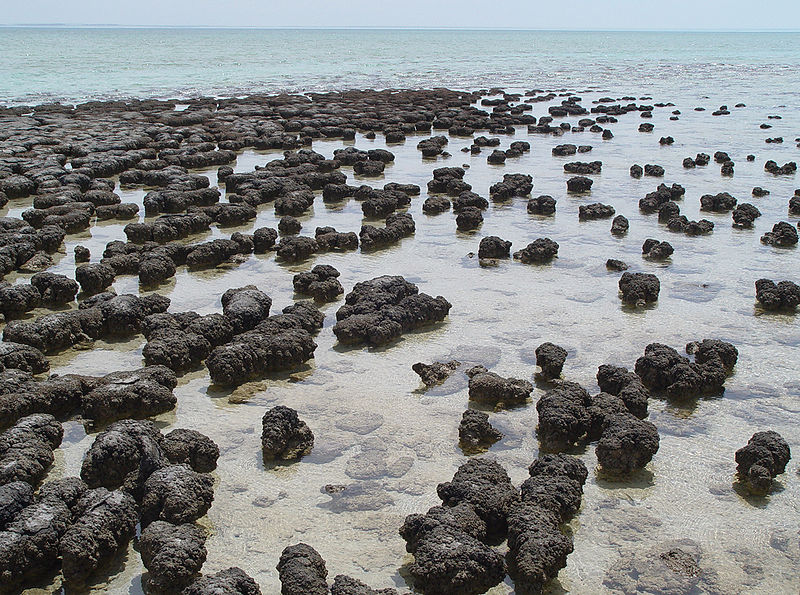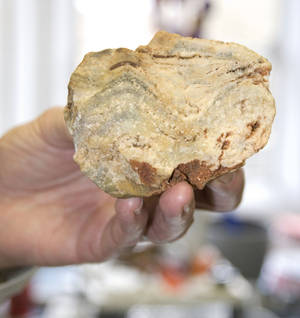Living rocks that changed the world
Interview with
 Sarah - We begin our tale in the seas of the Precambrian, around 3.5 billion years ago. Back then, the Earth was a very different place. Colder, with its much younger Sun, and with an atmosphere devoid of oxygen but packed full of so called 'greenhouse gases' like methane and carbon dioxide.
Sarah - We begin our tale in the seas of the Precambrian, around 3.5 billion years ago. Back then, the Earth was a very different place. Colder, with its much younger Sun, and with an atmosphere devoid of oxygen but packed full of so called 'greenhouse gases' like methane and carbon dioxide.
The oceans also had no oxygen and no obvious signs of life. However...
Ken - What you would find in the shallow margins of the oceans is evidence of life in the form of basically living rocks.
Sarah - Those 'living rocks', as described by Ken MacNamara, director of the Sedgwick Museum of Earth Sciences in Cambridge, are known as stromatolites, and are thought be the first evidence of life on Earth. Amazingly, they are structures that we still see today in shallow coastal areas and lakes.
 Ken - These stromatolites are basically big mounds. I always tend to liken them to rotten concrete cauliflowers. So when you go back in the fossil record what we find are layers of sediment that periodically form a little dome. And the dome might only be in some cases say 10cm high, other times they can form big domed structures some metres high. In terms of how you know these structures represent life - there's been a lot of debate about it, especially early ones - but nobody has come up with a logical way to explain how these things will form in a sediment other than by the activity of organisms.
Ken - These stromatolites are basically big mounds. I always tend to liken them to rotten concrete cauliflowers. So when you go back in the fossil record what we find are layers of sediment that periodically form a little dome. And the dome might only be in some cases say 10cm high, other times they can form big domed structures some metres high. In terms of how you know these structures represent life - there's been a lot of debate about it, especially early ones - but nobody has come up with a logical way to explain how these things will form in a sediment other than by the activity of organisms.
Sarah - The organisms responsible for building stromatolites today are photosynthesising microbes known as cyanobacteria. And just like their modern relatives, the ancient stromatolite builders not only produced food and energy directly from sunlight, but also another compound particularly important for other forms of life...
Ken - One of the arguments for the appearance of oxygen in the atmosphere and this major change from an anaerobic world where there's no oxygen in the oceans, no oxygen in the atmosphere, to oxygenated oceans and oxygenated atmosphere, is down to these cyanobacteria both ones that were constructing stromatolites and some types of bacteria that weren't stromatolite producers but were still around.
Sarah - So the early inhabitants of the oceans may have played a key role in making Earth habitable for life as we know it.
- Previous Explosive diversity
- Next Protecting the Pitcairn Islands









Comments
Add a comment